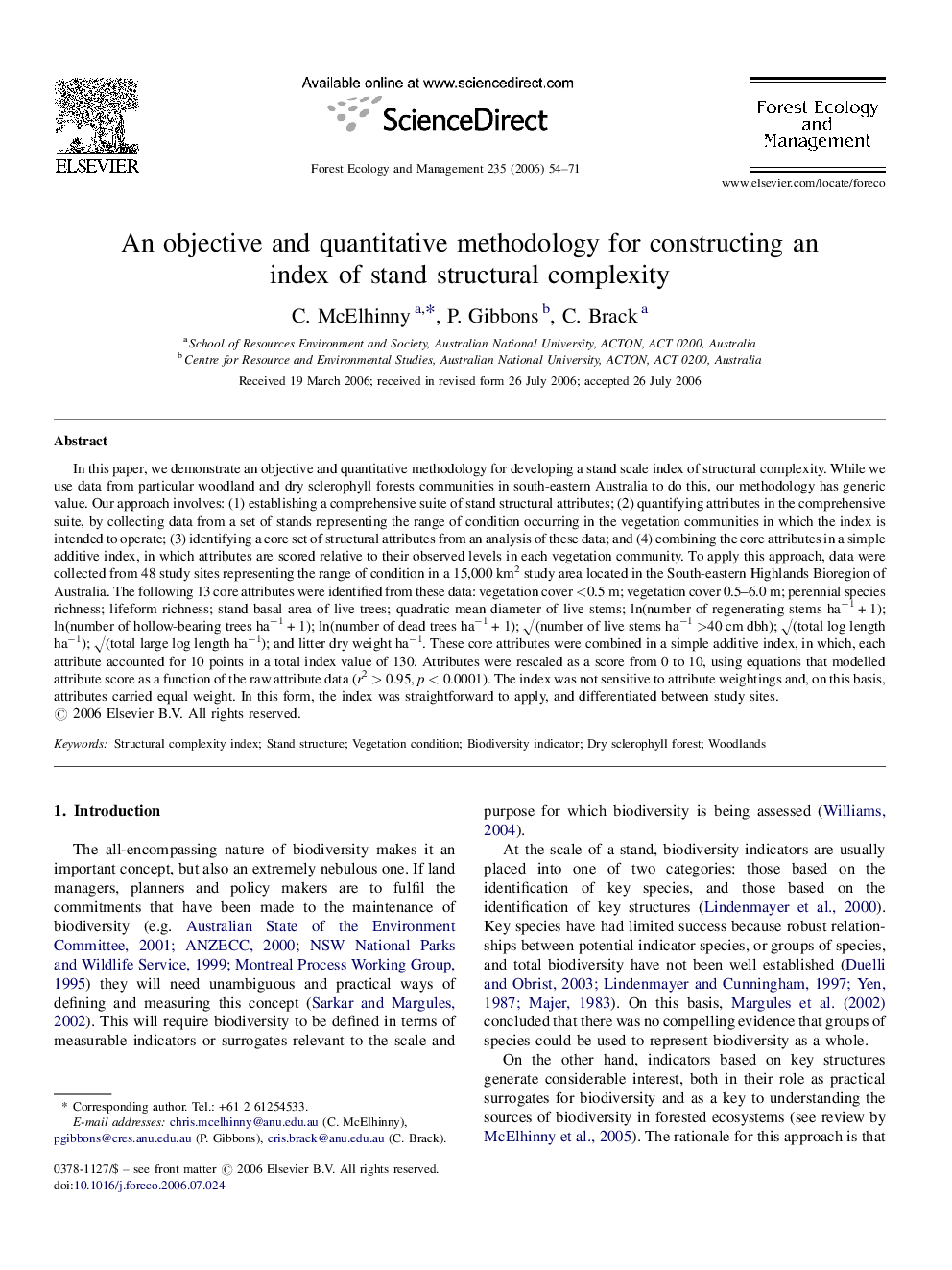| کد مقاله | کد نشریه | سال انتشار | مقاله انگلیسی | نسخه تمام متن |
|---|---|---|---|---|
| 90124 | 159367 | 2006 | 18 صفحه PDF | دانلود رایگان |

In this paper, we demonstrate an objective and quantitative methodology for developing a stand scale index of structural complexity. While we use data from particular woodland and dry sclerophyll forests communities in south-eastern Australia to do this, our methodology has generic value. Our approach involves: (1) establishing a comprehensive suite of stand structural attributes; (2) quantifying attributes in the comprehensive suite, by collecting data from a set of stands representing the range of condition occurring in the vegetation communities in which the index is intended to operate; (3) identifying a core set of structural attributes from an analysis of these data; and (4) combining the core attributes in a simple additive index, in which attributes are scored relative to their observed levels in each vegetation community. To apply this approach, data were collected from 48 study sites representing the range of condition in a 15,000 km2 study area located in the South-eastern Highlands Bioregion of Australia. The following 13 core attributes were identified from these data: vegetation cover <0.5 m; vegetation cover 0.5–6.0 m; perennial species richness; lifeform richness; stand basal area of live trees; quadratic mean diameter of live stems; ln(number of regenerating stems ha−1 + 1); ln(number of hollow-bearing trees ha−1 + 1); ln(number of dead trees ha−1 + 1); √(number of live stems ha−1 >40 cm dbh); √(total log length ha−1); √(total large log length ha−1); and litter dry weight ha−1. These core attributes were combined in a simple additive index, in which, each attribute accounted for 10 points in a total index value of 130. Attributes were rescaled as a score from 0 to 10, using equations that modelled attribute score as a function of the raw attribute data (r2 > 0.95, p < 0.0001). The index was not sensitive to attribute weightings and, on this basis, attributes carried equal weight. In this form, the index was straightforward to apply, and differentiated between study sites.
Journal: Forest Ecology and Management - Volume 235, Issues 1–3, 1 November 2006, Pages 54–71